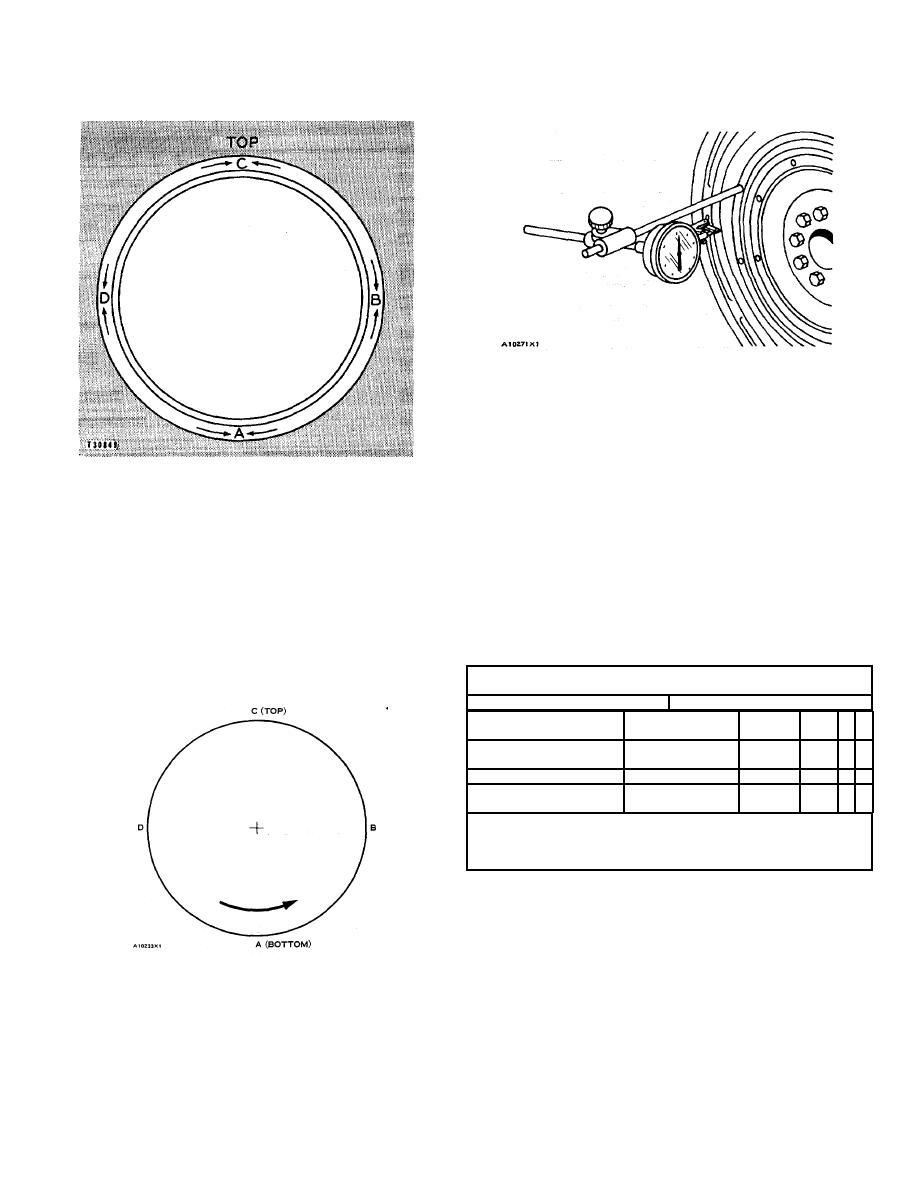 |
|||
|
|
|||
|
Page Title:
Bore Run out (radial eccentricity) of the Flywheel Housing |
|
||
| ||||||||||
|
|
 BASIC BLOCK
TESTING AND ADJUSTING
8S2328 DIAL INDICATOR GROUP INSTALLED
2. Divide the measurement from Step 1 by 2. Write this
number on line I in columns (B) & (D).
3. Turn the crankshaft to put the dial indicator at (A).
Adjust the dial indicator to "0" (zero).
4. Turn the crankshaft counterclockwise to put the dial
CHECKING FACE RUNOUT OF THE
indicator at (B). Write the measurement in the chart.
FLYWHEEL HOUSING
5. Turn the crankshaft counterclockwise to put the dial
A. Bottom. B. Right side. C. Top. D. Left side.
indicator at (C). Write the measurement in the chart.
6. Turn the crankshaft counterclockwise to put the dial
indicator at (D). Write the measurement in the chart.
Bore Runout (radial eccentricity) of the Flywheel
7. Add lines I & II by columns.
Housing
8. Subtract the smaller number from the larger number
in line III in columns (B) & (D). The result is the
1. With the dial indicator in position at (C), ad- just the
horizontal "eccentricity" (out of round). Line III,
dial indicator to "0" (zero). Push the crankshaft up
column (C) is the vertical eccentricity.
against the top bearing. Write the measurement for
bearing clearance on line 1 in column (C).
CHART FOR DIAL INDICATOR MEASUREMENTS
Position of dial indicator
Line No
A
B
CD
Correction for bearing
I
0
clearance
Dial Indicator Reading
II
0
Total of Line 1 & 2
III
0
**
*
*
*
*Total Vertical eccentricity (out of round).
**Subtract the smaller No. from the larger No. The
difference is the total horizontal eccentricity. A0234X1
9. On the graph for total eccentricity find the point of
intersection of the lines for vertical eccentricity and
horizontal eccentricity.
CHECKING BORE RUNOUT OF THE
FLYWHEEL HOUSING
79
|
|
Privacy Statement - Press Release - Copyright Information. - Contact Us |